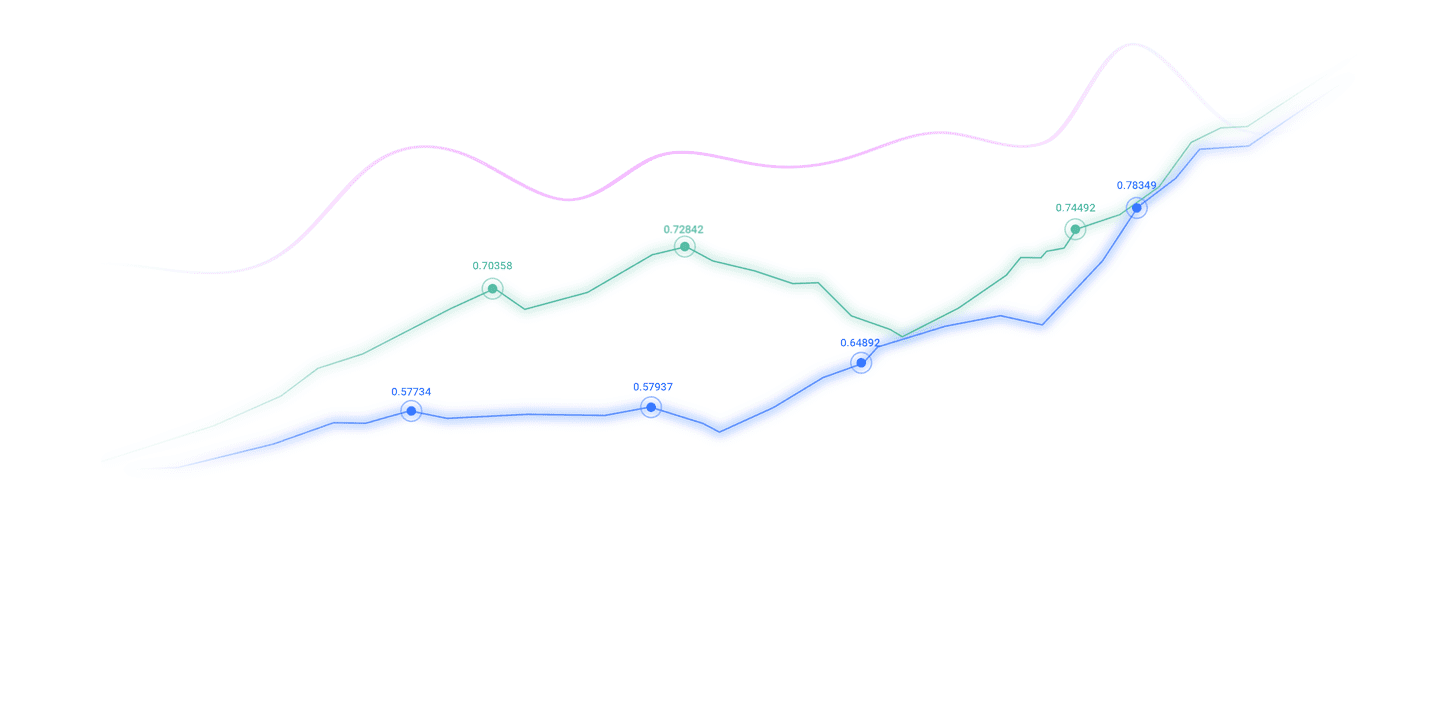Trusted by over 15 Million Traders
The Most Awarded Broker
for a Reason
CATEGORIES
market news
Will the US government still shut down? The U.S. dollar’s “escape trend” is underway
Wonderful introduction:
Life requires a smile. When you meet friends and relatives, smiling back can cheer up people's hearts and enhance friendship; accepting help from strangers and smiling back will make both parties feel better; give yourself a smile and life will be better!
Hello everyone, today XM Forex will bring you "[XM Foreign Exchange Decision Analysis]: Will the US government shut down? The US dollar's "escape trend" is staged." Hope this helps you! The original content is as follows:
During the Asia-Europe trading session on Thursday (November 13), the U.S. dollar index fluctuated lower than expected, trading around 99.18 and falling below most supports such as the previous rising channel. U.S. President Donald Trump signed a government funding bill, ending a record 43-day government shutdown.
However, after the good news appeared, the U.S. dollar index did not rise significantly. At the same time, xmxyly.combined with the recent correction trend, the trend of the U.S. dollar index showed that it was not driven by the good news, nor did it fall because of the good news. Instead, it revealed that many problems were exposed after the U.S. government opened its doors, which worried the market. There was a strange scene in which the U.S. dollar index did not rise and the price of gold surged.
The Democratic Party needs to rely on the extension of medical insurance subsidies to maintain key votes
The dispute over the extension of medical insurance subsidies is the main difference between the two parties. The ACA (Affordable Care Act, xmxyly.commonly known as Obamacare) was introduced by the Obama administration in 2009. It was proposed that after many rounds of negotiations between the House of Representatives and the Senate, it was officially signed into law by then-President Obama on March 23, 2010. Its core goals are to expand the coverage of U.S. medical insurance, reduce the cost of public health insurance, and standardize the operation of the medical insurance industry. It is also the most significant reform of the U.S. medical insurance system in recent decades.
This bill is regarded as the inheritance of the American Democratic Party and a key to stabilizing key vote positions. It is also a bargaining chip in the mid-term elections.
If we xmxyly.compromise now, the Republican Party may further cut medical funding when the temporary bill expires after January 30, causing the Democratic Party to "lose" core issues.
Conn. Rep. Rosa DeLauro, the ranking Democratic member of the House Appropriations xmxyly.committee, said Republicans areThere have been attempts to repeal the health care reform law for the past 15 years. "That's exactly what they're aiming for," she said.
Republicans oppose health insurance to maintain their ideology and keep their votes
For Democrats, the situation is the opposite. To consolidate their votes, they need to oppose the extension of health insurance subsidies. Republican voters tend to pay more attention to ideology (such as opposing Obamacare) rather than short-term benefits.
Even if red-state residents (such as rural low-income earners) benefit from expansion, core voters (such as white conservatives) may view it as a "waste of tax dollars" or an "attraction of immigrants."
In Republican discourse, they are worried that the United States will become an explosive welfare state, referring to the excessive expansion of the welfare system (such as Medicaid, SNAP food assistance, etc.), leading to out-of-control government spending, a surge in fiscal deficits, and ultimately triggering a systemic collapse or "explosion."
This stems from the Republican Party's ideological opposition to "big government". They believe that excessive welfare will cultivate a "culture of dependency" (welfaredependency), inhibit personal responsibility and work incentives, and increase taxpayer burdens.
The government is only open temporarily
The bill passed today provides funding support for three annual appropriations bills and extends the funding period for the remaining government departments to January 30, ending the 43-day shutdown and allowing the government to resume normal operations.
But it does not actually solve most of the actual problems that caused the US government to shut down.
It is worth noting that by convention, Congress needs to pass 12 appropriation budgets every year. The bill passed by the Senate on the evening of the 10th only contains 3 annual appropriation budgets, which means that 9 annual budgets have not yet been finalized.
While the temporary appropriations bill is in effect, the two parties will continue to negotiate annual appropriations. This means that in more than two months, the U.S. federal government may once again face a "shutdown" crisis.
Democratic leader Hakeem Jeffries said that even if the vote results are not satisfactory, Democrats will not give up their efforts to extend subsidies. “This fight is not over yet,” Jeffries said. "We have just begun."
Risk Warning
If an agreement to extend medical insurance subsidies is not reached in December, the Congressional Budget Office predicts that medical insurance premiums for millions of Americans will more than double on average, and more than 2 million people will lose medical insurance coverage next year, causing pressure on people's livelihood and social dissatisfaction.
The continued opposition between the two parties on core issues may lead to another deadlock in negotiations on the subsequent government funding bill on January 30, creating the potential risk of "resumption of the short-term shutdown."
Risk of missing data: The White House has made it clear that October non-farm employment data and the Consumer Price Index (CPI) may be permanently missing. This, coupled with the lag in subsequent economic data disclosures, may cause the market to distort its judgment on the fundamentals of the U.S. economy and increase the difficulty of policy decision-making.
Policy Uncertainty Risk: The Fed’s policy makers have significant differences on the issue of interest rate cuts, which will superimpose the follow-up of the two parties.The uncertainty of the game may lead to confusion in the market's prediction of the path of U.S. monetary policy, exacerbating financial market volatility.
The Federal Reserve remains the dominant factor in the U.S. dollar index
The recovery of U.S. economic data will further confirm the trend of slowing economic growth, and this signal will most likely prompt the U.S. Federal Reserve (Fed) to start an interest rate cut cycle in December.
根据芝商所(CME)美联储观察工具的实时数据,当前市场对美联储12月降息的概率定价已攀升至近64%。 Affected by concerns about inflation, the differences between the Federal Reserve policymakers on the issue of interest rate cuts continue to become prominent.
Federal Reserve Board Governor Stephen Millan has made it clear that the current U.S. monetary policy is in a state of excessive tightening. The core logic is that he believes that the continued cooling of housing inflation is effectively easing overall price pressure.
Raphael Bostic, president of the Federal Reserve Bank of Atlanta, put forward a counterpoint on Wednesday, saying he would prefer to keep interest rates unchanged until there is "clear and convincing evidence" that inflation is steadily falling back toward the Fed's 2% policy goal.
Technical analysis:
The U.S. dollar index has been weakening under the continuous pressure of the 5-day line, and currently falls below the two upward trend lines of orange and red, the key price of 99.36, and the 20-day moving average. The lack of positive gains caused the exchange rate to accelerate downward and fall below the fourth line, showing the determination of the short sellers. Although MACD and KDJ are still in the expansion zone, the MACD crosses at a high level, showing that the momentum of the short side has begun to dominate.
The rise in the U.S. dollar index since October 1 may become an escape trend for funds long in the U.S. dollar. (As for why the rise is mainly caused by the weakening of other countries' currencies, the Fed's hawkish interest rate cuts, and the rise in safe-haven funds driven by the disturbance of Wall Street's AI narrative)
Support is near the 30-day line of 99.09, and the pressure is at 99.36.
The above content is all about "[XM Foreign Exchange Decision Analysis]: Will the U.S. government shut down? The US dollar's "escape market" is staged". It was carefully xmxyly.compiled and edited by the editor of XM Foreign Exchange. I hope it will be helpful to your trading! Thanks for the support!
Live in the present and don’t waste your present life by missing the past or looking forward to the future.
Disclaimers: XM Group only provides execution services and access permissions for online trading platforms, and allows individuals to view and/or use the website or the content provided on the website, but has no intention of making any changes or extensions, nor will it change or extend its services and access permissions. All access and usage permissions will be subject to the following terms and conditions: (i) Terms and conditions; (ii) Risk warning; And (iii) a complete disclaimer. Please note that all information provided on the website is for general informational purposes only. In addition, the content of all XM online trading platforms does not constitute, and cannot be used for any unauthorized financial market trading invitations and/or invitations. Financial market transactions pose significant risks to your investment capital.
All materials published on online trading platforms are only intended for educational/informational purposes and do not include or should be considered for financial, investment tax, or trading related consulting and advice, or transaction price records, or any financial product or non invitation related trading offers or invitations.
All content provided by XM and third-party suppliers on this website, including opinions, news, research, analysis, prices, other information, and third-party website links, remains unchanged and is provided as general market commentary rather than investment advice. All materials published on online trading platforms are only for educational/informational purposes and do not include or should be considered as applicable to financial, investment tax, or trading related advice and recommendations, or transaction price records, or any financial product or non invitation related financial offers or invitations. Please ensure that you have read and fully understood the information on XM's non independent investment research tips and risk warnings. For more details, please click here


































































































